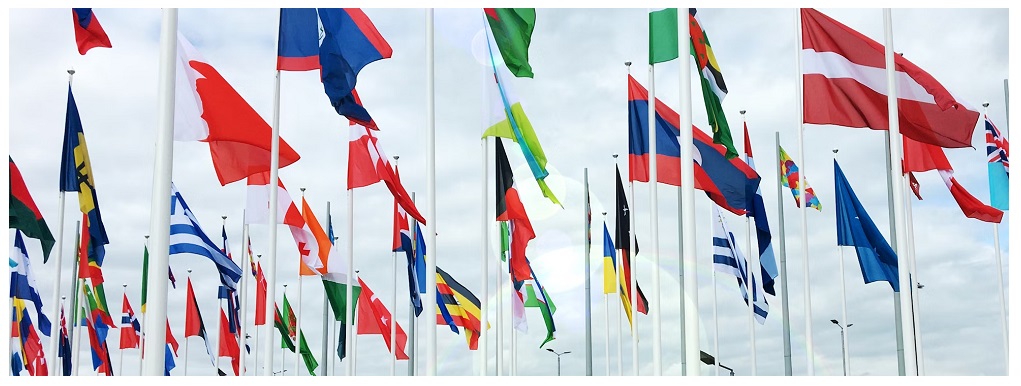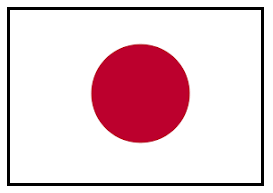Mastering Flag Design
This article explores the principles and techniques of flag design, including the importance of simplicity and symbolism, fundamental design principles, methods for creating compelling designs, examples of well-designed flags, and the flag redesign process.
 Introduction to Flag Design Principles and Techniques
Introduction to Flag Design Principles and Techniques
Flag design, also called vexillography, goes beyond just creating visually appealing symbols on pieces of cloth; it involves the intricate art of encapsulating the essence of nations, organizations, or causes in a single emblem. Vexillography is an art form that demands a deep understanding of the historical context and cultural symbolism associated with the flag's entity, ensuring that the design is aesthetically pleasing but also meaningful and relevant. For instance, the flag of Nepal stands out as a unique example, being the only non-rectangular country flag globally, with its distinctive shape carrying profound historical and cultural significance.
In the realm of flag design, vexillology, the study of flags, serves as a guiding light for designers, providing insights into the fundamental principles that underpin effective flag design. By delving into vexillology, designers can grasp the importance of symbolism, color choice, and simplicity in creating flags that are not only visually striking but also capable of conveying powerful messages and evoking emotions. The significance of vexillology in flag design is evident in how well-designed flags like the flags of Portugal and Argentina have successfully encapsulated historical references and cultural symbolism, making them iconic representations of their respective identities.
The Importance of Simplicity and Symbolism in Flag Design
The significance of simplicity and symbolism must be considered when discussing flag design. Flags are powerful visual representations of nations, organizations, or causes, and their effectiveness hinges on being easily identifiable from a distance.
For instance, the flag of Japan, with its simple red circle on a white background, is instantly recognizable worldwide, illustrating how simplicity can enhance a flag's impact. This principle underscores the notion that intricate designs or detailed imagery can get lost when viewed from afar, emphasizing the need for clear, straightforward flag designs to ensure immediate recognition and communication of identity.
Moreover, symbolism plays a crucial role in flag design by encapsulating the values, history, and aspirations of the entities that they represent.
- Symbolic elements like the Y-shape.
- Colors flowing together to represent unity.
- The central green band symbolizes the country's fertility and natural resources.
These symbols on flags are not merely decorative but serve as powerful visual storytelling devices, evoking national pride, unity, and shared heritage. Therefore, the fusion of simplicity and symbolism in flag design creates not just a piece of cloth but a potent emblem that resonates with individuals profoundly and emotionally, fostering a sense of belonging and identity.
Critical Principles of Flag Design
Key principles in flag design are fundamental to crafting memorable and meaningful flags that resonate with people. When contemplating flag design, scalability is critical, ensuring flags are visible and identifiable from different distances. For instance, the flag of Japan, with its simple red circle on a white background, is instantly recognizable even from afar, showcasing the effectiveness of a scalable design that stands out.

Moreover, the strategic use of colors in flag design is paramount as it can significantly impact how the flag is interpreted and the emotions it elicits. For example, the South African flag incorporates six colors, each representing a different aspect of the nation's diverse population and natural resources. This thoughtful selection of colors adds depth to the flag's symbolism, making it a powerful representation of unity in diversity. Additionally, choosing colors based on cultural significance and historical references can further enrich the flag's narrative, connecting it to the heritage and values of the people it represents. By striking a delicate balance between symbolism and aesthetics, flag designers can create visually striking flags that communicate profound messages and evoke a sense of pride and identity among the populace.
Techniques for Creating Effective Flag Designs
Flag designers encounter various challenges as they strive to balance creativity and tradition when crafting innovative flags rooted in design fundamentals. For instance, when designing the flag of Mozambique, the artist combined traditional cultural symbols with a modern design approach, resulting in a flag that is both visually striking and deeply symbolic, showcasing the country's history and aspirations. This example highlights the importance of blending creativity with respect for the cultural context in flag design.
Moreover, the role of digital tools and software in the contemporary flag design process cannot be overstated. These technological advancements enable designers to experiment with different layouts, color schemes, and symbols efficiently, leading to more refined and impactful flag designs. By utilizing these tools, flag designers can explore a wide range of creative possibilities while adhering to the principles of vexillography, ultimately enhancing the visual appeal and communicative power of flags. Additionally, the collaboration between designers and stakeholders is crucial in ensuring that flag designs meet aesthetic standards and effectively convey the intended message to the target audience.
Examples of Well-Designed Flags and Their Significance

Examining emblematic flags offers a profound understanding of the role of symbolism and strategic design components in creating flags. For instance, the flag of Japan, known as the "Nisshoki" or "Hinomaru," is a simplistic yet powerful design of a red circle on a white background.
This flag embodies the country's rising sun. It is deeply rooted in Japanese culture and history, symbolizing purity, sincerity, and the Land of the Rising Sun.
The simplicity and potent symbolism of the Japanese flag have contributed to its recognition and reverence worldwide.
 Furthermore, the flag of South Africa, also known as the "Yilobola," is a vibrant and multilayered design representing the unity of the country's diverse population.
Furthermore, the flag of South Africa, also known as the "Yilobola," is a vibrant and multilayered design representing the unity of the country's diverse population.
This flag features six colors, each holding symbolic significance: black for the people, green for the fertility of the land, yellow for the country's mineral wealth, white for unity, red for the bloodshed in the country's struggle for independence, and blue for the sky and oceans surrounding South Africa.
The flag's composition reflects the nation's history of reconciliation and diversity, making it a poignant symbol of its journey toward democracy and inclusivity.

Moreover, the flag of Brazil, with its iconic green field, golden diamond, and blue celestial globe with 27 white, five-pointed stars, represents various elements of Brazilian culture and history.
The green and yellow colors pay homage to the Brazilian Empire, the blue globe symbolizes the night sky over Rio de Janeiro on November 15, 1889, and the stars represent the Brazilian states.
This intricate yet harmonious design encapsulates the country's rich heritage, natural beauty, and aspirations for the future, reflecting the essence of Brazil as a nation.

The Flag Redesign Process
The evolution of flags through redesign initiatives reflects the dynamic nature of societies and their values.
For instance, the flag redesign process in South Africa following the end of apartheid symbolized the country's transition to a more inclusive and unified nation. This redesign not only represented the aspirations of the diverse population but also signified a new era of democracy and equality.
Similarly, the recent flag redesign in New Zealand aimed to represent the indigenous Maori population better and acknowledge their cultural heritage, showcasing a shift towards a more inclusive national identity.
Moreover, the flag redesign process has challenges, as it often involves navigating stakeholder disagreements and managing public expectations.
For example, Canada's attempt to redesign its flag in the 1960s faced opposition from various groups advocating for different symbols and historical references. Balancing the desires of other stakeholders while creating a flag that unites the population under shared values is a delicate task that requires thorough research and sensitivity to cultural nuances.
Despite these challenges, successful flag redesign projects, like the one in Rwanda post-Genocide, have demonstrated the power of symbols in fostering reconciliation, unity, and national pride.
/1004/site-assets/logo.png)
/1004/site-assets/phone.png)
/1004/site-assets/cart.png)
/1004/site-assets/dateseal.jpg)
/1004/site-assets/creditcards.png)